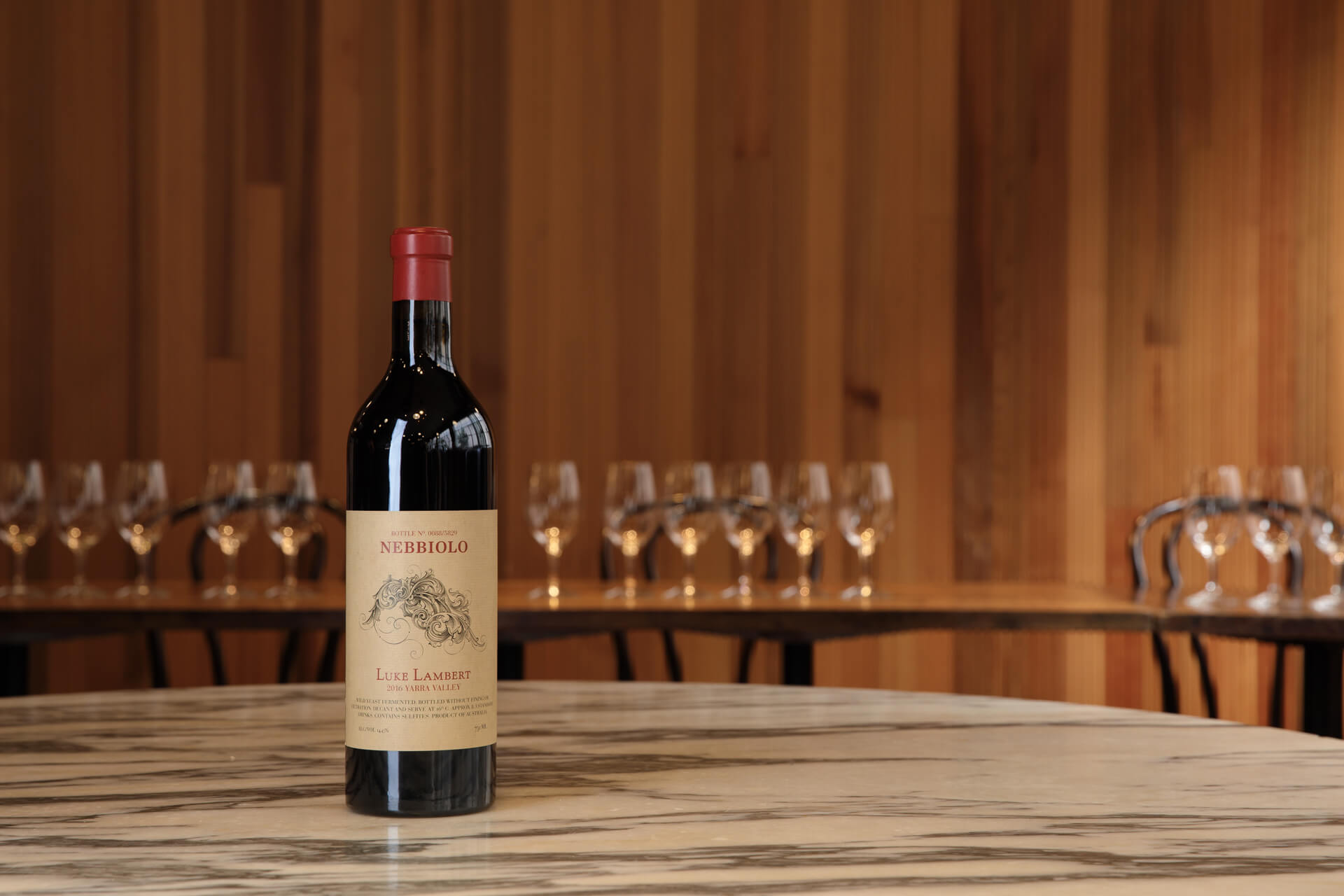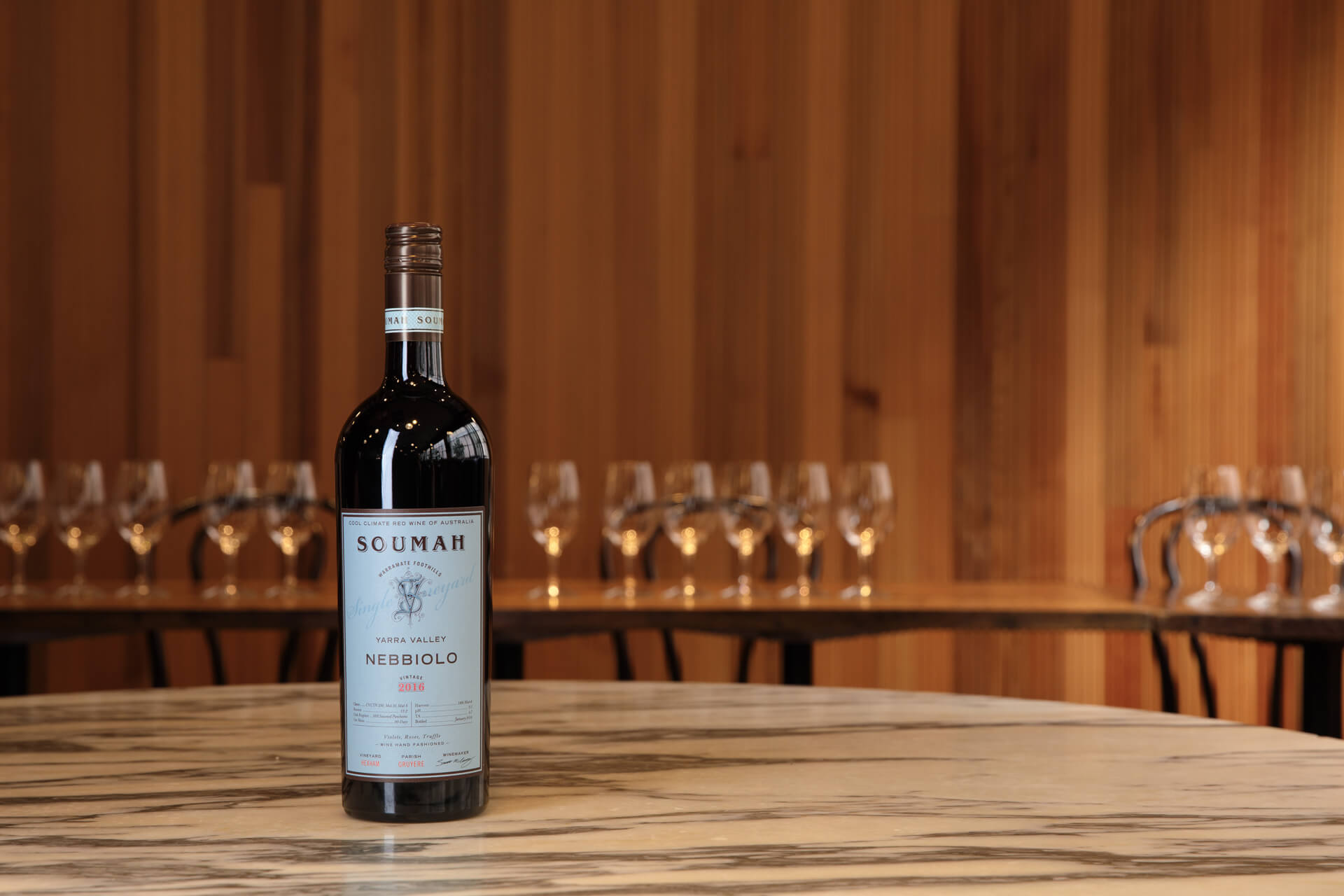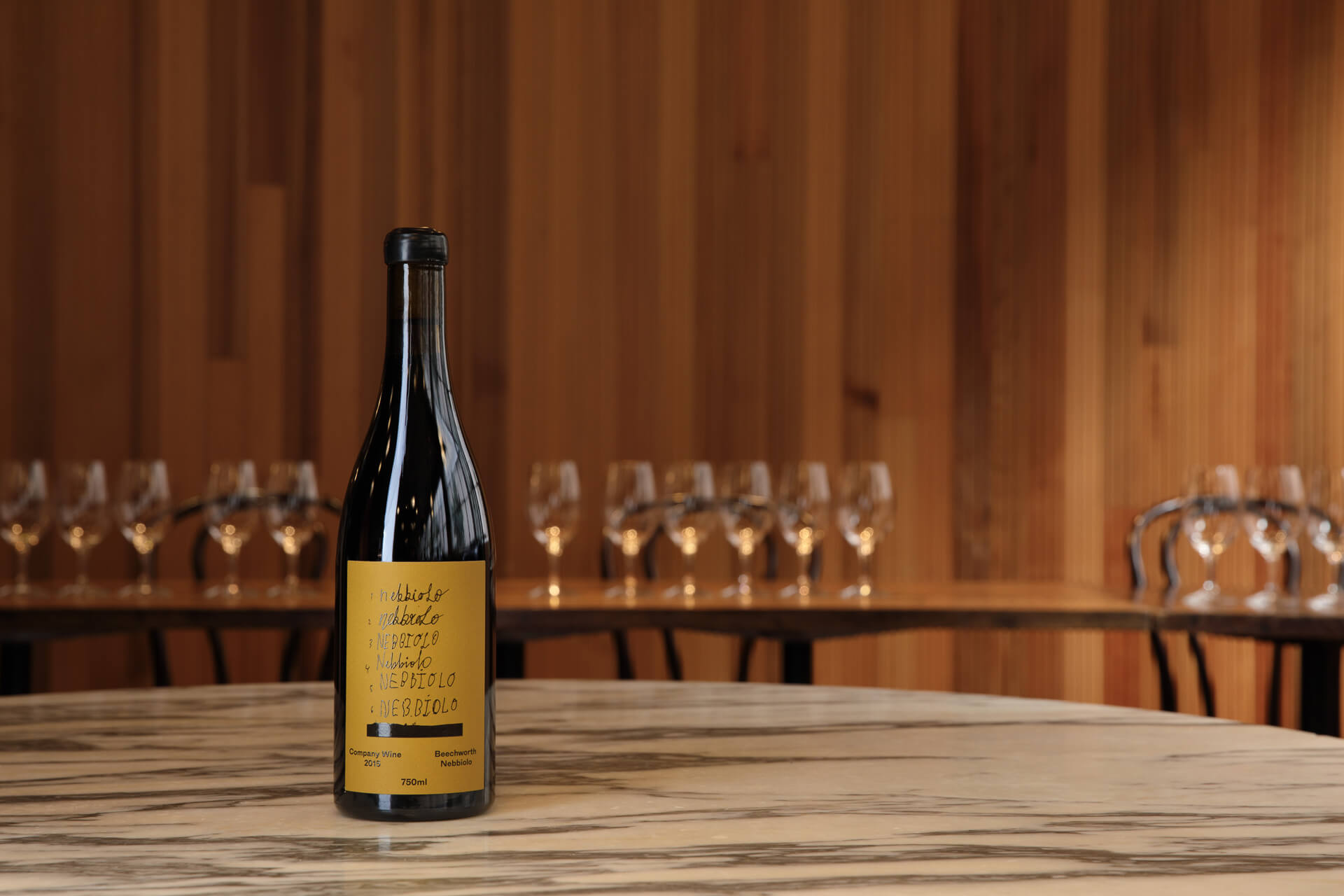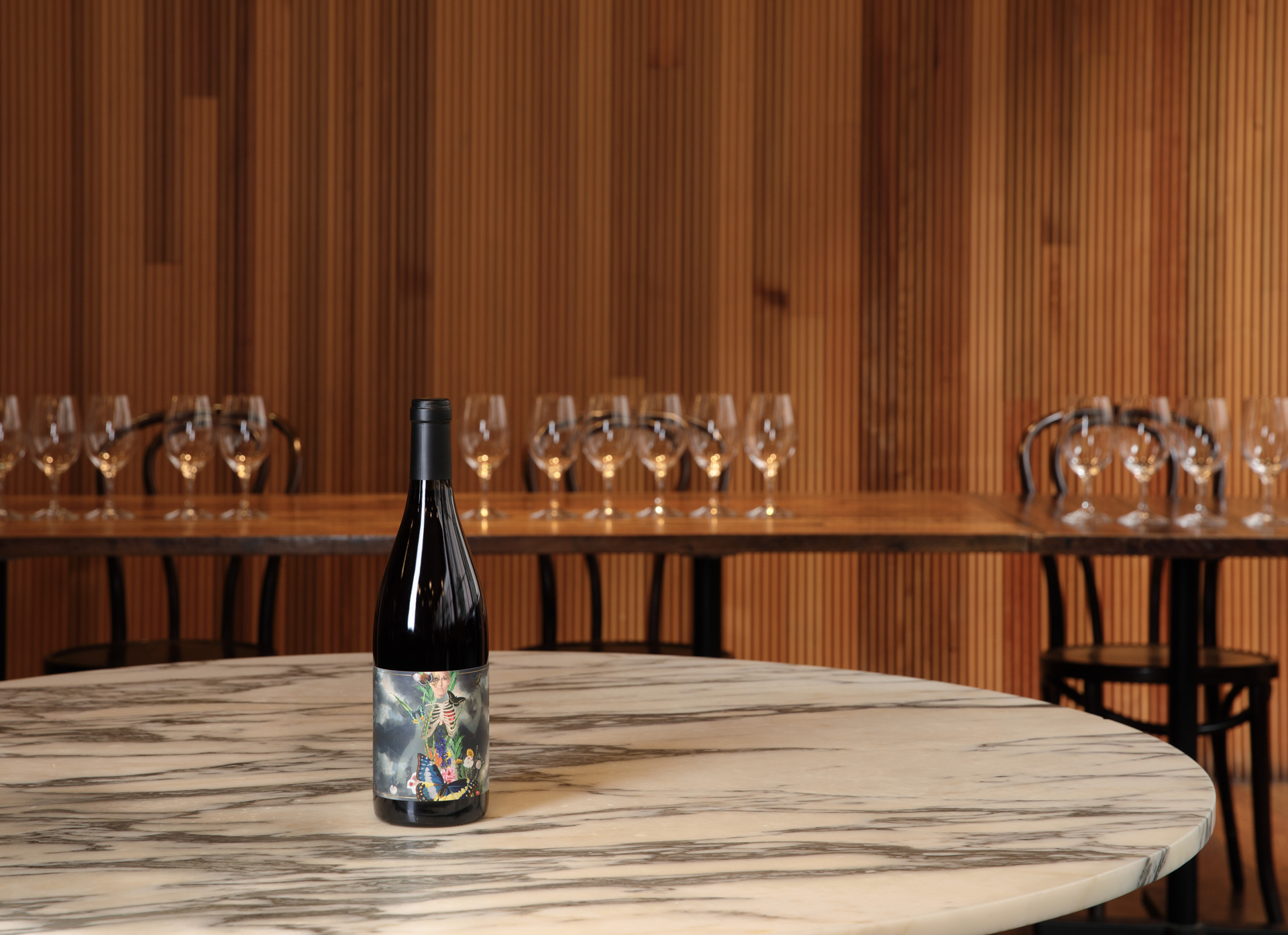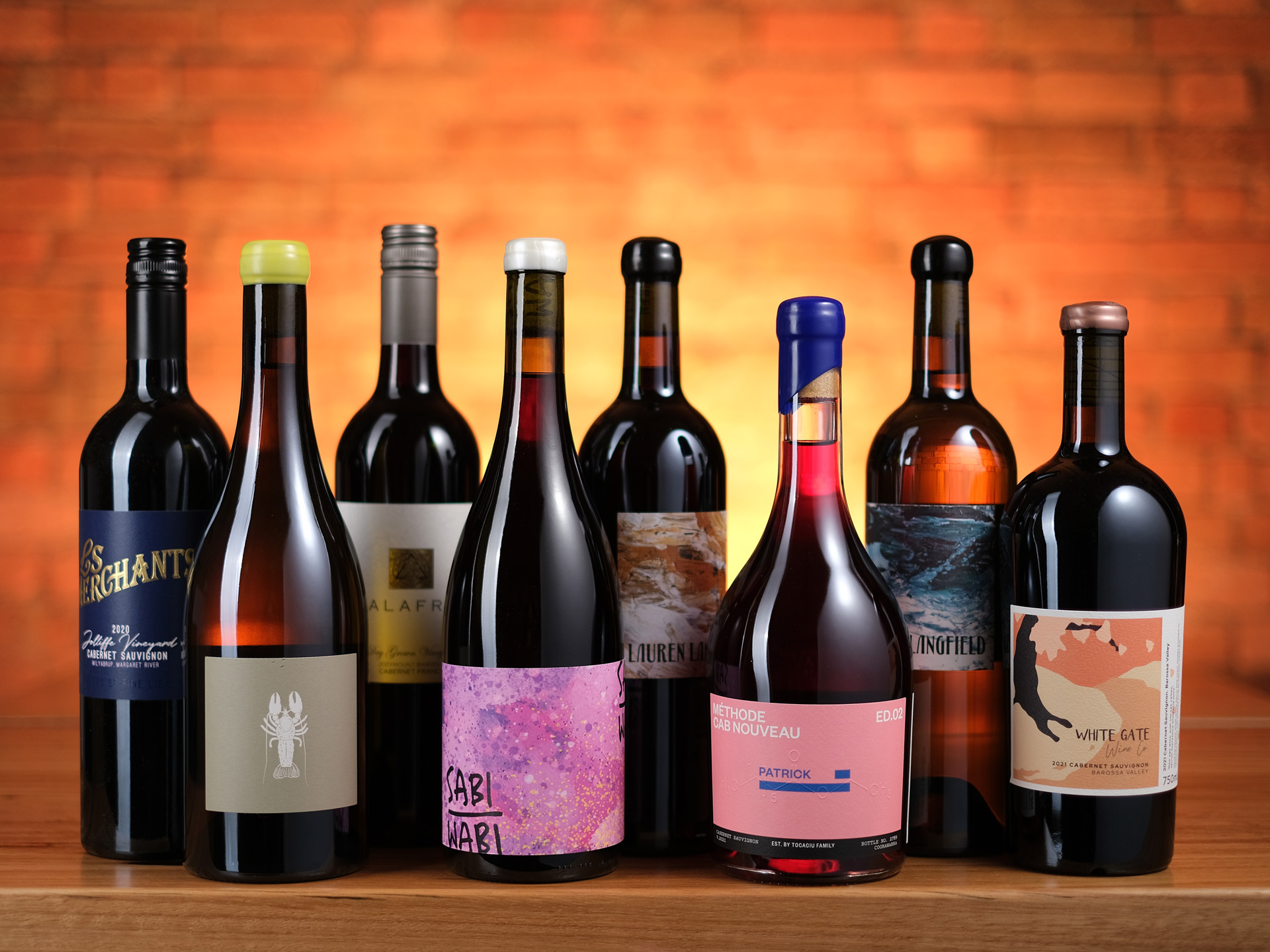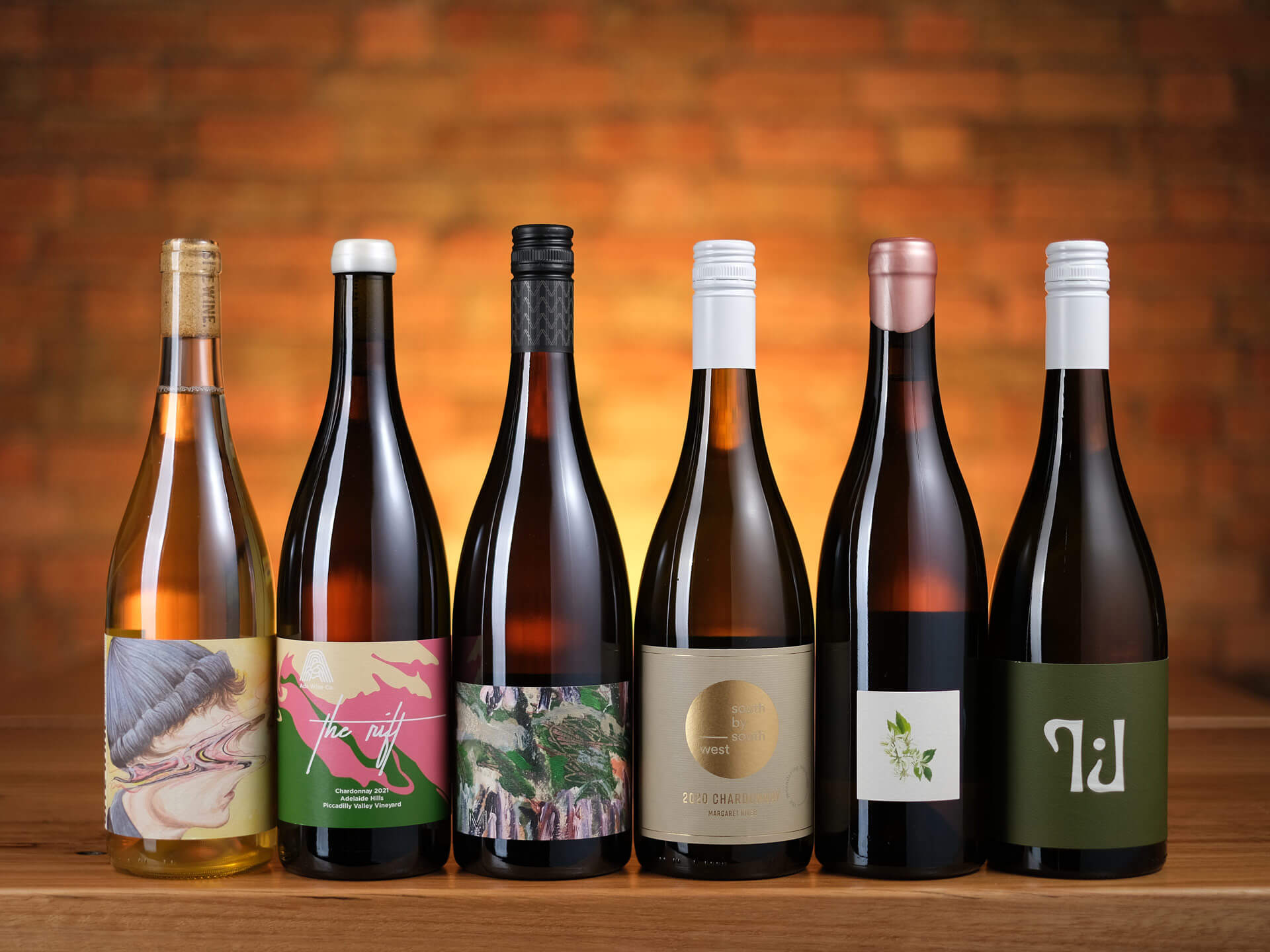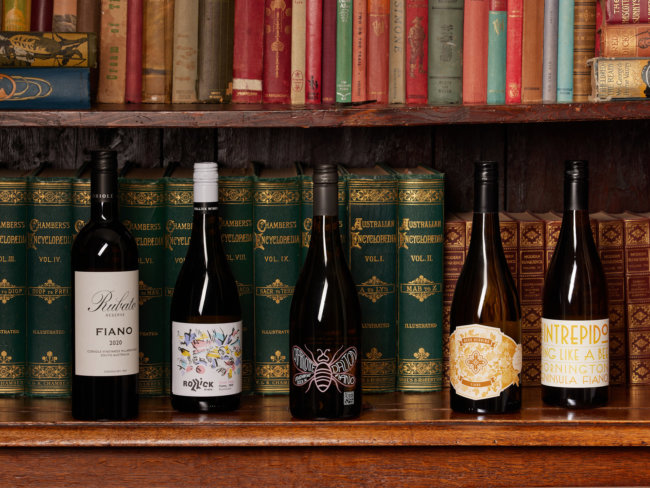Nebbiolo. It’s one of those revered words. The lights dim. Eyes widen. The chatter quietens to a murmur. Well, metaphorically at least. For those held in its thrall, nebbiolo holds a grip like no other grape.
Nebbiolo is a paradox, a combination of elements that shouldn’t make sense. But they do. It tends to higher alcohol, but rarely becomes rich and sweet fruited in doing so. Even at high ripeness, it maintains nervy acidity, set against profound tannins. It can be fragrantly pretty and floral, as well as ruggedly mineral and dry toned – and often simultaneously so. It conveys nuance of site like few varieties, and it can produce staggeringly long-lived wines. It is like no other grape.
But, for such a distinguished, characterful variety, Nebbiolo is not that widely grown.
Even in Piedmont, where nebbiolo is the emblematic grape, it is far from the most well-represented variety, with it meaningfully eclipsed by dolcetto, and significantly so by barbera. Most identify it with the Langhe, and more famously and specifically with Barolo and Barbaresco, but it is also grown further north in the cooler reaches of Gattinara, Ghemme, Boca etc., where it makes for considerably nervier offerings. It pops up in a couple of other Italian regions, but significantly so – in quality terms – in Valtellina, Lombardy, under the synonym Chiavennasca.
Outside of Italy, Nebbiolo is grown sparingly, with smatterings in California and further up the West Coast in the cooler states, such as Oregon and Washington. Australia accounts for a large share of the vines grown outside Italy, but the 200-odd hectares planted is a mere blip compared to Italy’s 5,536 (with 81% in Piedmont). Nonetheless, essentially all these plantings are headed for fine wine production, with the Adelaide Hills, the King and Alpine Valleys, Pyrenees and the Yarra Valley the prime sources.
With both maturing vines and a growing depth of winemaking knowledge on how to handle the fruit, we thought it timely to line up currently available Australian bottlings to see how it’s faring across the land. With 30 of this country’s best examples (not completely exhaustive but deeply representative) of nebbiolo in hand, and six of the country’s brightest wine minds in attendance, we set about making sense of it all.
While the panel consisted of experts used to judging wines technically and assigning them scores, this was not our brief. We simply wanted each panellist to select the six wines that engaged them the most, and on any level. This was not an exercise in technical perfection, but rather engagement and interest, though naturally those spheres may very well intersect. The other important caveat was that the wines needn’t subscribe to a classic view on what nebbiolo ‘should’ look like based on Italian benchmarks. Again, the comparison is inevitable, but we weren’t looking for caricature; we were looking for wines that made sense of nebbiolo in any given Australian macroclimate, with their own unique soil profiles.
Interestingly, though the panel shared some of their top six choices, they all nominated a different wine for their most compelling. And some of the wines not making any of the panel’s shortlist were spoken of favourably. So, based on the parameters laid down, there are some notable exclusions from this list. That 19 wines in total made the top six lists (with several other wines just outside those individual lists) goes to the strength and the diversity of the showing. It also highlights that dedicated professionals with highly educated palates reach different conclusions, and eminently supportable ones at that. That’s wine.
Our panel was made up of: Jane Lopes, Beverage Director at Attica; Leanne Altmann, Beverage Director for Andrew McConnell’s restaurants; winemaker Ben Haines of Ben Haines Wine; Kayleen Reynolds, manager of the City Wine Shop; Gavin Cremming, Group Sommelier for the Van Haandel Group; and Christian Canala, director of Vinify wine Co. All wines were tasted blind.
![]()
Ben Haines, Gavin Cremming, Jane Lopes, Leanne Altmann, Christian Canala, and Kayleen Reynolds tasting in the Wine Room at Cumulus Up.
The overview
The general consensus was that the standard was very high, especially given the relative scarcity of the variety.
“A very exciting breadth of styles, and very few bad wines in this line-up.” Canala remarked. Lopes echoed this view: “Overall, I thought the quality was very high. Lots of good, bright, high-toned wines, with a few veering into more serious structure and tannins, and the best combining both aspects.”
Cremming praised the lack of parody: “It was nice to see such great winemaking across the board with a broad range of styles that had a point of interest as opposed attempting to mimic what is deemed as classic.”
There was certainly a division in styles, with more brooding expressions set against bright, red-fruited, ‘pinot-like’ offerings, with Canala suggesting that “The more successful versions seemed to champion the primary characters of nebbiolo. Many of the wines which saw oak tended to carry the oak signature like baggage, rather than integrating nicely.”
Haines found that “Fuller bodied styles didn’t perform as well for me overall, but some did – it was a matter of how sensitive the handling of acid and tannin was… Those wines that showed some transparency to place and maker were the most compelling, and these tended to be the wines that weren’t too ‘safe’.”
Altmann noted that “the best wines had freshness and silky tannin structure, well-managed oak and a core of fruit on the palate.” However, she found some shied away from trademark nebbiolo structure: “Some wines seemed to lack the tannin structure to accompany their fruit and alcohol – perhaps planted in a warm environment unsuited to the long, slow ripening preferred by nebbiolo.”
Even when in balance, the approachable tannin across the board surprised the panel. In some cases, this seemed to be the result of winemaking, while in others it seemed to be a result of clone, viticultural conditions or picking decisions. Overall, it was a theme across the board, distinguishing them from their Italian counterparts.
The panel generally saw the mark of region showing through, but not always in a positive light. “Where wines fell down was either with a bit too ‘regional’ a tinge (i.e. heavy eucalyptus/mint notes) or with pushing volatility too far.” Remarked Lopes.
That volatile acidity (for those not familiar with the term, this can present as vinegar or nail polish remover, which doesn’t sound great, but can be beneficial in small concentrations) was pointed to several times, with it enhancing the aromatic lift of some wines, but intruding on the fruit expression of others, though tasters were divided on when it was most successfully incorporated.
Haines went further, with a broader challenge: “What is the role of VA in wine? What if we look at VA as an element of wine? What is it contributing? What is it cancelling out? Is it intentional? Is it complexing? Is it in balance? Most importantly, does it taste good?” A question for another day.
Reynolds picked out several wines based on their brightness of fruit and vibrancy, but not at the expense of complexity or interest. Indeed, Haines saw that the tasting confirmed the “general shift of Australian wine towards balance, restraint, and importantly, thoughtful management of the inherent sweetness in Australian fruit; adopting winemaking approaches that balance this sweetness with savouriness and freshness.”
Interestingly, though the panel shared some of their top six choices, they all nominated a different wine for their most compelling. And some of the wines not making any of the panel’s shortlist were spoken of favourably. So, based on the parameters laid down, there are some notable exclusions from this list. That 19 wines in total made the top six lists (with several other wines just outside those individual lists) goes to the strength and the diversity of the showing. It also highlights that dedicated professionals with highly educated palates reach different conclusions, and eminently supportable ones at that. That’s wine. Aggregating scores and revealing the best wine on average… well, would be exactly that. Average.
The number one picks
These are the number one picks from each of the panellists, with supplementary notes from other panellists if they featured in their top six lists.
![]()
2016 Luke Lambert Yarra Valley Nebbiolo
Along with Thick as Thieves, Luke Lambert’s wine made it into three of the panellists top six, with Canala citing it as his favourite: “A darker, more brooding side to nebbiolo. Black fruits, graphite and crushed fennel seeds with bittersweet chinotto aromatics. Incredible vibrancy to the palate, a superb interplay between the fruit and acid drive, and (in the context of the great nebbiolo wines of Piedmont) a very correct approach to the tannins. …built to age, too.” While Altman praised both the “real fruit intensity” and “firm and savoury” tannins. Haines thought that “The signature hallmarks of this wine, as with all great nebbiolo, is in its structure, and the way in which the fruit and non-fruit elements are woven throughout. …Gravelly tannins but never close to astringent, at one with acidity that has vivid brightness and crunch drawing out the fruit and bringing the flow. This is the truly distinguishing character for me with this wine. Flow.”
![]()
2016 Thick as Thieves King Valley Nebbiolo
Also with three comments from the panel, Syd Bradford’s King Valley Nebbiolo was Haines’ top pick, just pipping the Lambert: “Wild fruit character, a wild seaweed vibe, wild texture …threaded by a tart, almost sour cherry acidity. …The tannin is complex and delicate yet with a firm grip… Not a polished wine, but one of great character, honesty and transparency to maker.” While Cremming found “an impressive amount of precision,” and that “savoury spice into some sour and lacquered cherries gave it a point of interest.” Reynolds found it to be “all about delicacy, elegance and vibrancy,” and “a great introduction to nebbiolo.” She found it “more Valtellina in style and very approachable to many palates.”
![]()
2016 Lino Ramble ‘Knuckle Bones’ Adelaide Hills Nebbiolo
This was Lopes’ most favoured wine, commenting on its “exuberant, lush, expressive, and bright” aromatics, with “exotic red fruit, spice, and a slight herbaceous edge.” She found it “fresh, but well structured, with some juiciness of fruit on the front palate.” It also drew praise from Reynolds, who called it “very complex with lots of fruit and structure patiently waiting for its time to shine,” and remarked on its “great potential.”
![]()
2016 S.C. Pannell Adelaide Hills Nebbiolo
This was Altmann’s top pick, showing intensity with “bay leaves, forest floor, undergrowth and a saline iodine note.” She remarked on its assuredness, citing it as a wine of real confidence in its handling, reflecting a strong familiarity with the variety: “Polished and assured, with proper grippy tannin, fruit weight and freshness. Impressive – has swagger.”
![]()
2016 Latta ‘Headwaters’ Pyrenees Nebbiolo
This was singled out as Reynolds’ wine of the day, remarking on both the prettiness and soft fruit, while “expressing loads of brightness and complexity.” She found the palate “Packed with mouth-drying structure that craves a dinner table experience. My top wine of the bunch!”
![]()
2017 Ravensworth Hilltops Nebbiolo
Cremming’s top pick came courtesy of Bryan Martin (who is also the winery manager at Clonakilla): “A classic example of good winemaking and gentle handling. A wine loaded with freshness, perfume and alluring purple fruits with the perfect amount of savoury. The tannin is firm enough to show its complexity, but the acid is racy enough to give it vitality. Not classically varietal but a great wine to appreciate straight out of the gate.”
The consensus picks
These were all in the top six lists, receiving cross support from the tasters, though none were nominated as their wine of the day.
![]()
2015 Pipan Steel ‘Blend III’ Alpine Valleys Nebbiolo
A nebbiolo specialist, both the Pipan Steel wines were well received by the panel, with Haines finding the ‘Blend III’ “One of the most instantly gratifying wines of the day. Highly attractive, expressive, highly perfumed, and deeply fruited. Very engaging.” Canala found it “displayed a more floral side with rose, perfume and wild strawberry.” While Altmann saw “orange oil, herbs, dried fruit.” Canala praised the oak integration, while Haines found it to be less destined for longevity than some of the other wines, but that it made “a strong case for the aromatic attribute of the variety in cool climate Australia.”
![]()
Lopes singled this out for high praise noting its expressive nose of “fern, savoury herbs, and dried red fruit.” She found it the “most herbaceous and green” of her picks, and remarked on its “ferrous, ironstone quality.” Altmann found it “Fine and fragrant, with some oak spice of nutmeg, sandalwood, mizunara [Japanese oak]. Cranberry and briar.” Canala said that “It’s got some presence on the palate too, fleshy acidity and quite big, flavoursome tannins. Kind of guttural, but delicious in that way.” While Lopes called it a “Serious wine with great length and structure.”
![]()
2015 Pipan Steel ‘Clone VII’ Alpine Valleys Nebbiolo
The second of the Pipan Steel wines, this time from a single clone, made Lopes’ top six: “A pretty, fresh, lifted style. Front palate is subtle, a mix of dried red fruit and some rustic iodine notes. The palate is long and complex, with nice lift and structure.” As it did Altmann’s: “Dried dark fruit, briary, sticks and earth. Real interest here. Tannins are fine and mouth filling and provide real dryness. …perhaps flying under the radar in this line-up. Impressive.”
![]()
2015 Company Wine Beechworth Nebbiolo
Reynolds spoke of this highly: “Very good, dense, dark fruit while classically expressing the ‘tar and roses’ we all love and crave about nebbiolo as a variety. This wine is very Australian and very nebbiolo. The structure is driving this wine but what sets it apart from the rest is the complex rich fruit backing it all up. Very good!” While Lopes remarked on its “Great, balanced structure, with a darker fruit quality.”
![]()
2016 Lethbridge Pyrenees Nebbiolo
Lopes saw this as “Deeper in colour, fruit is heady and brooding. Juicy on the front palate, but structure comes through strongly on the back. Good evolution and balance.” While Altmann remarked: “Silky palate, some real flow and drive. …tannins are fine and add dryness against the fruit. Australian in a good way. Real intent.”
![]()
2016 SubRosa Pyrenees Nebbiolo
Canala called this his “guilty pleasure wine,” remarking on the “sweetly fruited core, and a tight packaging of the tannin, just a pleasure.” Cremming enjoyed the depth and commented on the “Well-layered red cherry and wild red fruit, classic dried herb,” while Canala saw “wizz fizz, cherry ripe and some baking spice.” “Tannins are present as expected, but a vibrant acidity gives freshness to the wine,” concluded Cremming.
The other top picks
These wines featured in one of the panellists’ top six, but they were not necessarily the lowest ranked on their individual lists. We’ll let their words do the talking.
![]()
Haines: “Another style in the lighter, more restrained camp, but coming to the party on the palate… There’s a sweetness to the fruit, as with many examples across the line-up, which nestles nicely into the very savoury, almost saline structure garnered from what appears to be bunchy [see: whole bunch] fermentation. …Characterful and expressive, with red and black fruit, wild herbs, fresh soil, and a subtle but distinct nuttiness.”
![]()
2017 Spider Bill Adelaide Hills Nebbiolo
Cremming: “A nice silkiness to the fruit presented this wine as quite an elegant expression of nebbiolo. By no means was it extremely complex, but it was loaded with drinkable appeal. A good Neb without the flex.”
![]()
2017 Traviarti Beechworth Nebbiolo
Reynolds: “Very much nebbiolo – this wine shows the fruit and structure that we crave wanting a glass of nebbiolo. Beautifully made and balanced. Very enjoyable.”
![]()
2016 Adelina Adelaide Hills Nebbiolo
Haines: “A lighter interpretation of nebbiolo with a delicate but assertive frame. Well knit, far from over-extracted, but with enough of an acid–tannin crescendo to give freshness and speak of variety; the cleft of rusticity assures nebbiolo, rather than Pinot Noir.”
![]()
Cremming: “An interesting look at nebbiolo, a nice amount of fruit concentration and lovely herbaceous finish. Not classic, but somewhat varietal in a sense, with its own appeal. Well balanced to the end and an easy drinking Neb.”
![]()
2017 Out of Step ‘Malakoff Estate Vineyard’ Pyrenees Nebbiolo
Canala: “An elegant approach with fresh herbs, Aperol bitters, powdered white pepper and a bright carbonic note. Delicately perfumed, and a kind of nebbiolo nouveau, elegant in its profile of very silken tannin and bright but not abrasive acidity.”
![]()
2016 Jasper Hill ‘Georgia’s Paddock’ Heathcote Nebbiolo
Cremming: “A wine to lay down and re-visit in a few years. More brooding dark fruit with a muscular structure that would require it to be consumed with food. It should age well.”
How the tasting was conducted
All wines were decanted into clear wine bottles, so as to not let bottle shape or closure type intrude on the appraisal. The wines were presented in five brackets of six wines each, with no particular order to the wines. Once the initial tasting was completed, the panel re-tasted as they saw fit to confirm or recalibrate their first impressions, and to give those wines tasted first a chance to be properly compared to those tasted later. The identity of the wines was revealed after the panellists had disclosed their opinions.
*Note Canala had three wines from his portfolio included in the tasting, and Haines had one wine under his label. Both were free to comment on those wines, but for transparency’s sake, no notes were included in the final assessment.
![]()
The panel
Leanne Altmann is beverage director of Andrew McConnell’s restaurants. She is a WSET Certified Educator, and holds the WSET Diploma, where she was the top Australian graduate. Altmann is a Len Evans scholar, and has the Court of Master Sommeliers Advanced Certificate, dux. She is a recipient of the Negociants Australia Working with Wine Fellowship, won the inaugural Ruinart Sommelier Challenge, and was the 2018 Vin de Champagne Award winner. Altman is a regular contributor to The Saturday Paper and an occasional wine judge.
![]()
Jane Lopes and Leanne Altmann
Jane Lopes graduated from the University of Chicago with a degree in Renaissance Literature and a love for food, wine, and spirits. While taking a year off, Jane found a job in wine retail. She worked at the nationally-acclaimed cocktail bar, The Violet Hour, and in 2011, moved to Nashville to be the opening Beverage Director at The Catbird Seat. After moving to New York in 2013, Jane began working as a sommelier at Eleven Madison Park, helping to lift the restaurant to #1 in the world on the World’s 50 Best List. In 2017, Jane was recruited to run the beverage program at Attica. Her first book, Vignette, was published in 2019 by Hardie Grant.
Ben Haines began his wine career in 1999 as a viticulturist, completing his winemaking degree in 2003. He has held various senior winemaking roles over the last 15 years, including at Mitchelton and Mount Langi Ghiran. He was The Wine Society’s Young Winemaker of the Year for 2008. Haines launched his eponymous label in 2009, with a focus on the Yarra Valley and the Grampians. His French wine project commenced 2010, in the Southern Rhône, delving into biodynamics. Haines dedicated himself to Ben Haines Wine full-time in 2019. He is also a Stage 2 Master of Wine Student.
![]()
Ben Haines and Gavin Cremming
Gavin Cremming developed his interest in wine in Aspen Colorado while travelling and working. He subsequently worked for several years at Coda and Tonka where he was mentored by Travis Howe, before taking on the Head Sommelier role at the newly rebuilt Stokehouse, in St Kilda. He has since become the Group Sommelier for the Van Haandel Group.
Kayleen Reynolds is the manager of the City Wine Shop, in Melbourne (the inaugural Wineslinger winner). She has worked harvests both here and in New Zealand, and is also a budding wine judge, including as an associate at the National Wine Show, and at Sommelier Australia Scholarships. She is currently a WSET Diploma student.
![]()
Christian Canala and Kayleen Reynolds
Christian Canala started Vinify Wine Company in 2016 after working in fine wine retail and wholesale for the better part of a decade. Having started his wine journey at Adelaide University’s renowned Viticulture & Oenology course, he left early to pursue a true calling in sales and marketing. His mission is a clear one: to create the world’s most influential wine distribution agency. Incubated on Italian wine, it remains his specialty, with a particular bent for the wines of Piedmont.


